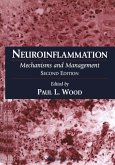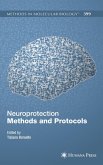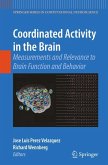The third section, Imaging, focuses on informatics representation and approaches to the structural complexity of the brain using a variety of both traditional and non-invasive imaging methods. The final section, Neuroinformatics in Genetics and Neurodegenerative Diseases, demonstrate the value of using components of neuroinformatics as a way to understand the complex disorders of Dementia, Schizophrenia and Alzheimer's disease. Neuroinformatics will be an essential text for all those interested in keeping up with the latest issues in neuroinformatics and/or learning about and joining this field of research.
Dieser Download kann aus rechtlichen Gründen nur mit Rechnungsadresse in A, B, BG, CY, CZ, D, DK, EW, E, FIN, F, GR, HR, H, IRL, I, LT, L, LR, M, NL, PL, P, R, S, SLO, SK ausgeliefert werden.
"This is a comprehensive review of the latest in the complex field that combines neuroscience and informatics research to develop tools that will assist in better understanding the brain. ... It is targeted primarily at anyone working in neurosciences research such as students, clinicians, and scientists. ... is an essential book for anyone looking for a better understanding of the fast growing field of neuroinformatics. This book presents the latest techniques in neuroinformatics through advanced models for sharing neuroscience data." (Raj Tummala, Doody's Review Service, August, 2008)
"Neuroinformatics represents less than 20 years old field in a neuroscience research. ... to give an overview of the current state of this field. ... All contributions are written in form of practical laboratory protocols often including listings of computer programs. The book will be of great use for practicing neuroscientists ... already actively working in the field of neuroscience or planning to extend their research interest into this field." (L'ubica Lacinová, General Physiology and Biophysics, Vol. 29, April, 2010)
"The book Neuroinformatics compiles research topics from authors who received support from the Human Brain Project. ... basic neuroscientists and neuroimaging researchers navigating the complexities of applying neuroinformatics solutions to their research problems may find the book very useful. ... Graduate students of biomedical informatics will find this book helpful as an introduction to various areas of neuroinformatics and as a guide to potential areas of research. In summary, this book will be valuable to the neuroscience and bioinformatics research community." (American Journal of Neuroradiology, November, 2009)









